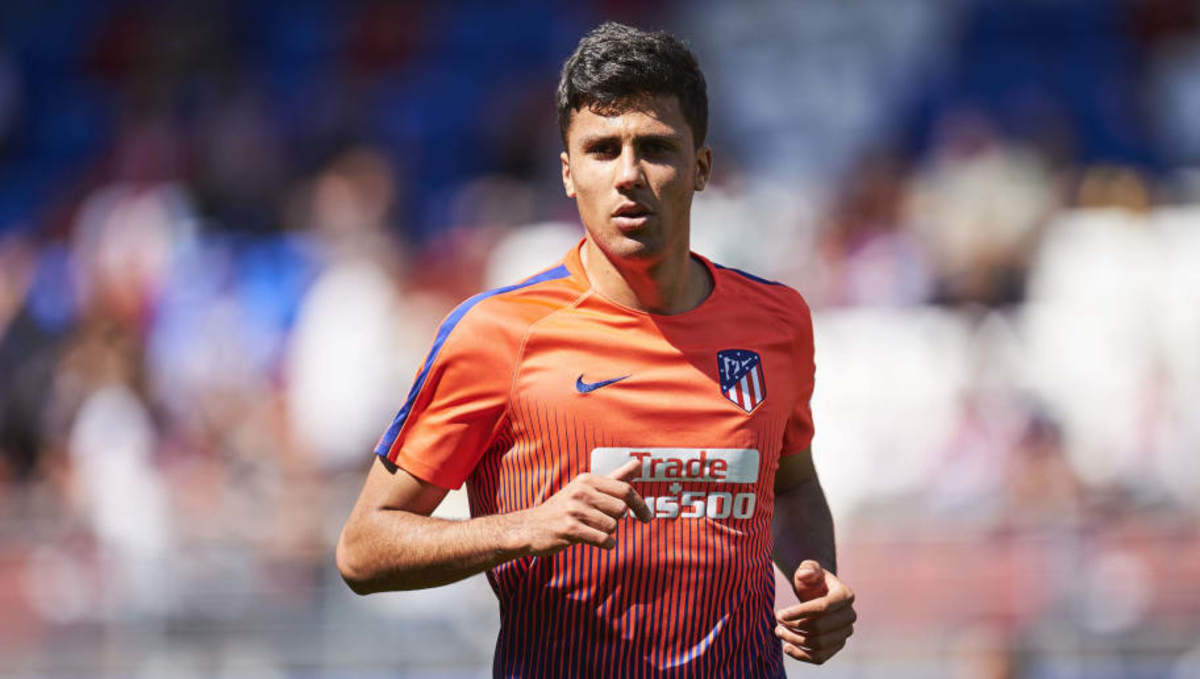Rodri: Statistically the Perfect Midfielder for Pep Guardiola and Manchester City

Manchester City have completed the signing of the summer with the £63m acquisition of Atletico Madrid midfielder Rodri.
No, it's not a steal, but the Citizens have hardly been duped in this instance. The 23-year-old is the real deal, a worthy successor to the magnificent Fernandinho and the man to build a side around.
Let's look at the stats - you can't argue with them! Rodri finished in second place out of every La Liga player when it came to winning aerial duels and retrieving possession for his side, whilst he was in the top six for both the total number of passes completed and his accuracy in doing so.
There was only one statistic in which the youngster did reign supreme, but it was a rather important one - tackles. No other footballer in the Spanish top-flight made more than he, proving his worth as a defensive force.
So, what does the above tell us about the former Atletico midfielder? We've already mentioned how Rodri is the heir apparent to Fernandinho's pivotal role at the Etihad Stadium and his numbers from last campaign show that Guardiola has landed a carbon-copy of his current enforcer. Or has he?
The Brazilian incumbent made significantly less tackles and was less prolific at winning the ball back, though that is partially due to City's dominance of possession. When it comes to that area of the game, the pair are fairly evenly matched, though Rodri has a slight edge.
At the top level, these fine margins can be crucial, meaning what appears to be just a minor upgrade can in fact be the difference between a quadruple and a treble.
However, there's more; Rodri is vastly superior to Fernandinho when it comes to his abilities with the ball at his feet and, in a Guardiola team, it goes without saying that such attributes are invaluable. Though the Spaniard's overall passing accuracy is narrowly better than the 33-year-old's, there is a marked difference in their proficiency from range.
The new arrival had a long-ball conversion rate of 71% last term, whereas Fernandinho’s stood at 59%. Think about Aymeric Laporte or Ederson here; why was Pep so eager to bring these two into the fold?
The ex-Barcelona boss wanted them because they add a wholly different dimension to the possession-based, passing-mad brand of football he has employed to wonderful effect. With yet another expert passer, opposing defences really will have to stay on high alert at all times.
So, we've established that Rodri can do anything Fernandinho can, whilst also providing a greater array of passing and a little more tenacity in the middle of the park. Of course, that's not where the good news ends for Sky Blues supporters.
As the saying goes, you can't teach an old dog new tricks, and so it has proved. The aging destroyer has been a superb servant for Guardiola, but he has never been the greatest at bringing the ball forward. His replacement, however, is capable of driving hard at defenders, pinning them back.
Rodri attempted more dribbles in 2018/19 and did so with a higher success rate, creating spaces for teammates with his powerful bursts up-field. This is ideal for Guardiola, who allows his players the freedom to interchange positions, so long as there is a teammate to cover their role.
At the Etihad, the Spanish international would add impetus and bustling energy to the midfield, both in and out of possession. The only other player who is able to do that with serious regularity and potency is Kevin De Bruyne; do you think it would be a positive or a negative to have another squad member who can emulate the Belgian?
But, why does any of this matter? Surely, a midfield anchor should be just that, a man who sits deep and breaks up players. Not when you're a trend-setter like Guardiola, when you can envision new ways of playing the beautiful game.
To bring his unique style to life, the man at the base of the midfield-three must be more than a Claude Makelele type, though that is no insult to the Frenchman, who was merely part of a different system.
Out of all the deep-lying midfielders Guardiola has coached, Sergio Busquets was the best suited to the Catalan's game-plan. Why? Because he had the attributes of both a silky playmaker and a bruising enforcer rolled into one.
Using the 30-year-old as a base from which all else sprung was the foundation of Barcelona's success, as he was able to win back the ball, find the pass between the lines and re-position himself for the next time he would be called upon.
Had it been a purely defensive-minded player, the likes of Xavi and Iniesta would still be finding pockets in behind, but the duo would be found far less often and their intelligent positioning would, therefore, be of less use.
At the other extreme, a first-rate distributor with less defensive nous couldn't win back the ball with such ease and, as a result, would have less opportunity to find a teammate further forward. To be Pep's darling, you need to be adept at both.
It's no coincidence that Guardiola has gone for a player that looks so similar to Busquets in terms of his on-field demeanour. Rodri is the man who can take the Sky Blues into the latter stages of the Champions League and, perhaps, even to that elusive grand prize.









